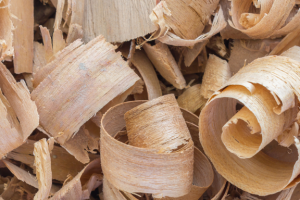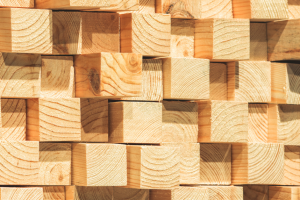Engineered wood products have long been important in the Australian market, but there is no doubt their influence is growing rapidly. Among the most impressive growth has been recorded for structural products like Laminated Veneer Lumber (LVL) and I-Beams, reported under the ‘Wooden Posts & Beams’ category of Builders’ Joinery. The value of imports was up a huge 69.5% over the year-ended September.
Unfortunately, this data is only available by value, with no indication of the volume of imports. Although that limits price-based analysis, there is still plenty of data to examine.
First, when we look at the total value of Builders’ Joinery over the last decade (year-ended September), we can see there has been a very significant lift in the value of imports since 2011. Note we have excluded the ‘cellular panels’ designation, a topic about which we will have more to say in 2022.

To go straight to the dashboard and take a closer look at the data, click here.
Growth in the value of Builders’ Joinery imports over the decade has been a remarkable annual average of 14.8% per annum, reaching a total of AUDFob335 million year-ended September. The last year alone saw total import value lift 26.3%.
Second, we can observe the solid red bars above, used to show the rise in import values for Wooden Posts and Beams.
As the second chart shows, the value of those imports lifted an average 12.2% per annum over the decade and by that massive 69.5% over the last year. The total value of imports lifted to a huge AUDFob151 million year-ended September.

To go straight to the dashboard and take a closer look at the data, click here.
This chart also shows patterns of supply – at least by value – shifting as the total value of imports has risen. What was once the domain of the US-based LVL manufacturers is now a far more diverse market, with supply from many nations, and also in specific products.
The table here shows year-end September import values for the major countries over the last two years. It is easily observed that the contribution from North America is waning, under the pressure of their surging housing demand.
A wider group of countries contributing to total supply is of interest to potential local producers, especially as this market continues to grow.
|
AUDM |
2020M09 |
2021M09 |
% Change |
|
Austria |
1,404,105 |
1,473,025 |
4.9% |
|
Canada |
1,041,466 |
50,211 |
-95.2% |
|
China |
4,402,646 |
12,670,626 |
187.8% |
|
Finland |
14,941,798 |
19,385,146 |
29.7% |
|
Indonesia |
7,101,971 |
10,443,903 |
47.1% |
|
Malaysia |
2,162,329 |
2,484,804 |
14.9% |
|
New Zealand |
12,322,123 |
21,186,590 |
71.9% |
|
Russian Federation |
13,378,516 |
40,601,265 |
203.5% |
|
United States |
24,408,283 |
23,043,458 |
-5.6% |
|
Other |
7,712,754 |
19,310,791 |
150.4% |
|
Total |
88,875,991 |
150,649,820 |
69.5% |
Builders’ Joinery is not alone in growing its import share in the latest spike in dwelling approvals. Imports of Coniferous Mouldings, especially from China (ably supported by stability of supply from New Zealand) have looked solid until recent months.
Now, imports of these products are climbing fast, underscoring the building process – mouldings come after framing for the most part – and also, the sheer volume of building work resting in the pipeline.
Just as we might expect the lift in Builder’s Joinery imports to continue, we should expect the same for coniferous mouldings.

To go straight to the dashboard and take a closer look at the data, click here.
|
2020M09 |
2021M09 |
% Change |
|
|
Brazil |
– |
230 |
– |
|
Chile |
20,681 |
18,884 |
-8.7% |
|
China |
83,917 |
111,241 |
32.6% |
|
Germany |
22,597 |
415 |
-98.2% |
|
Estonia |
3,919 |
3,392 |
-13.4% |
|
New Zealand |
52,076 |
53,024 |
1.8% |
|
Other |
5,973 |
8,383 |
40.3% |
|
Total |
189,162 |
195,570 |
3.4% |



